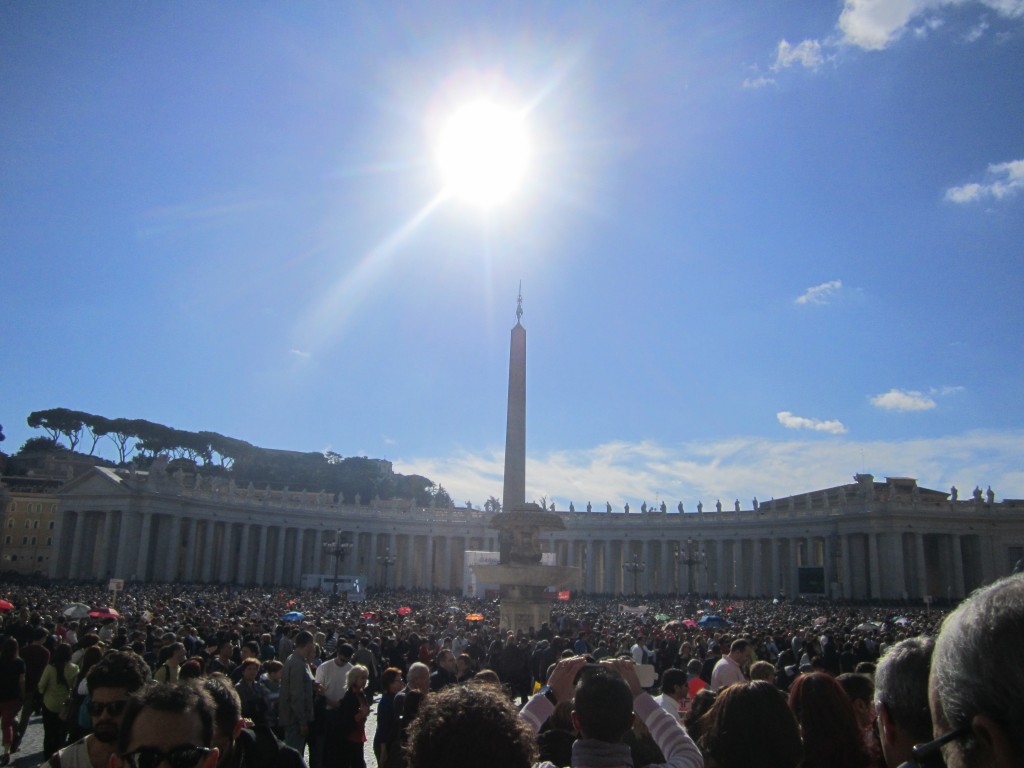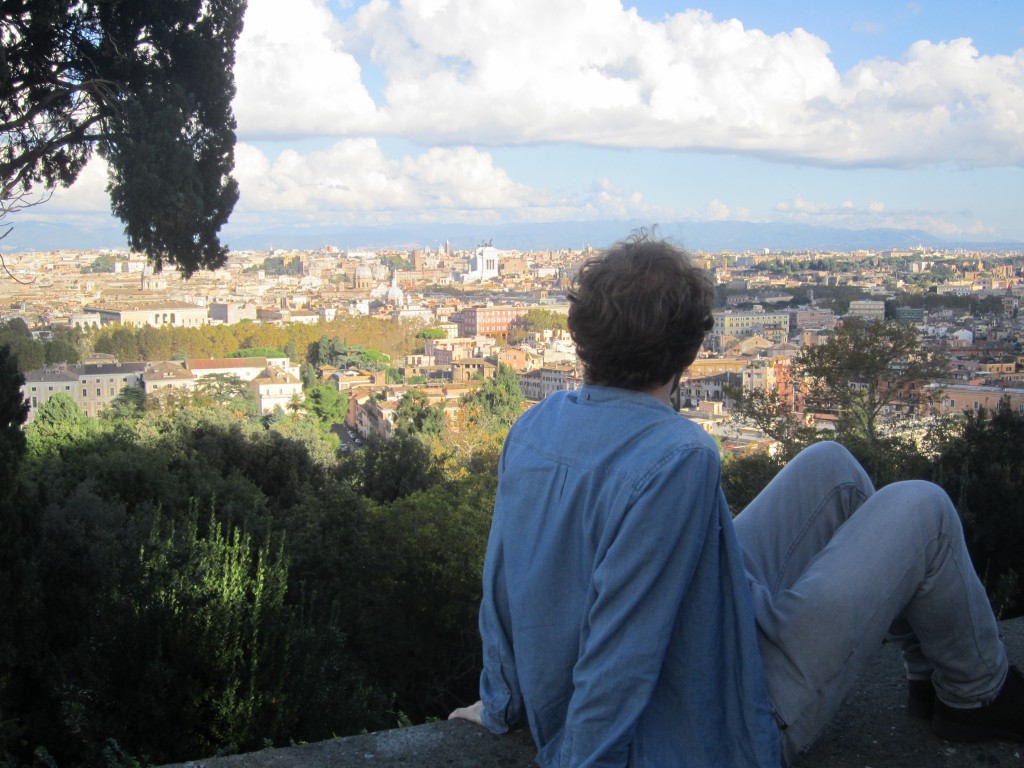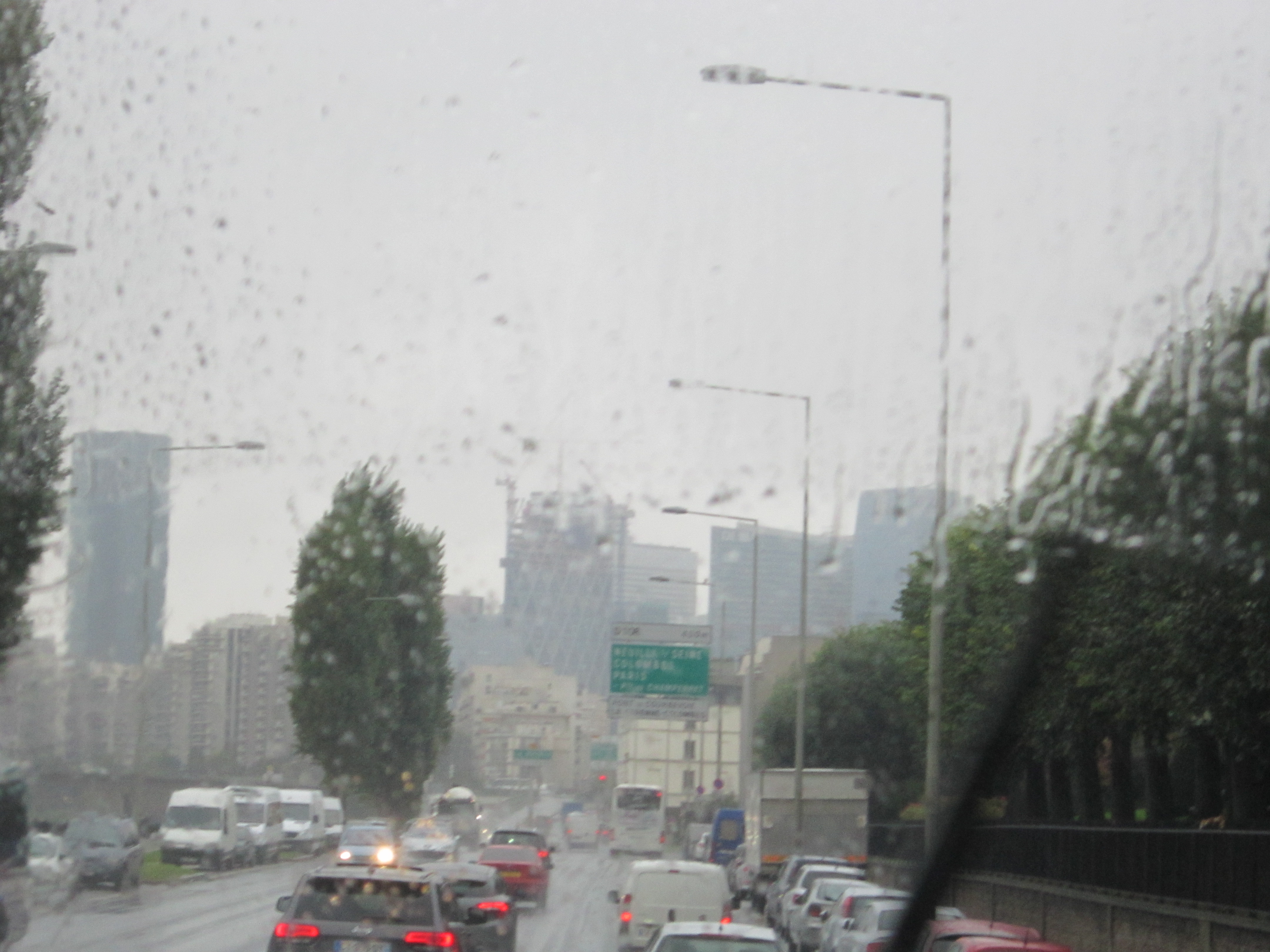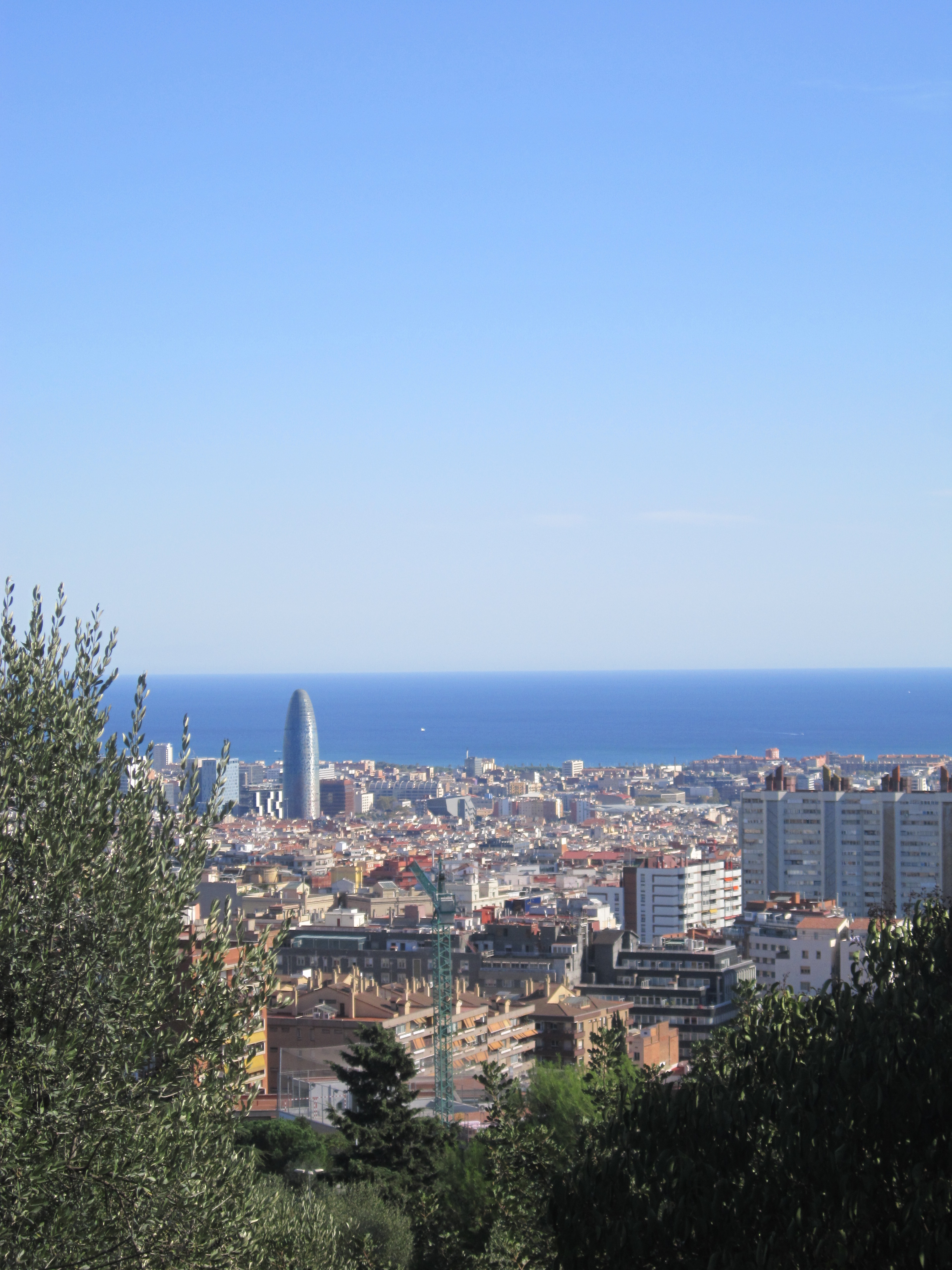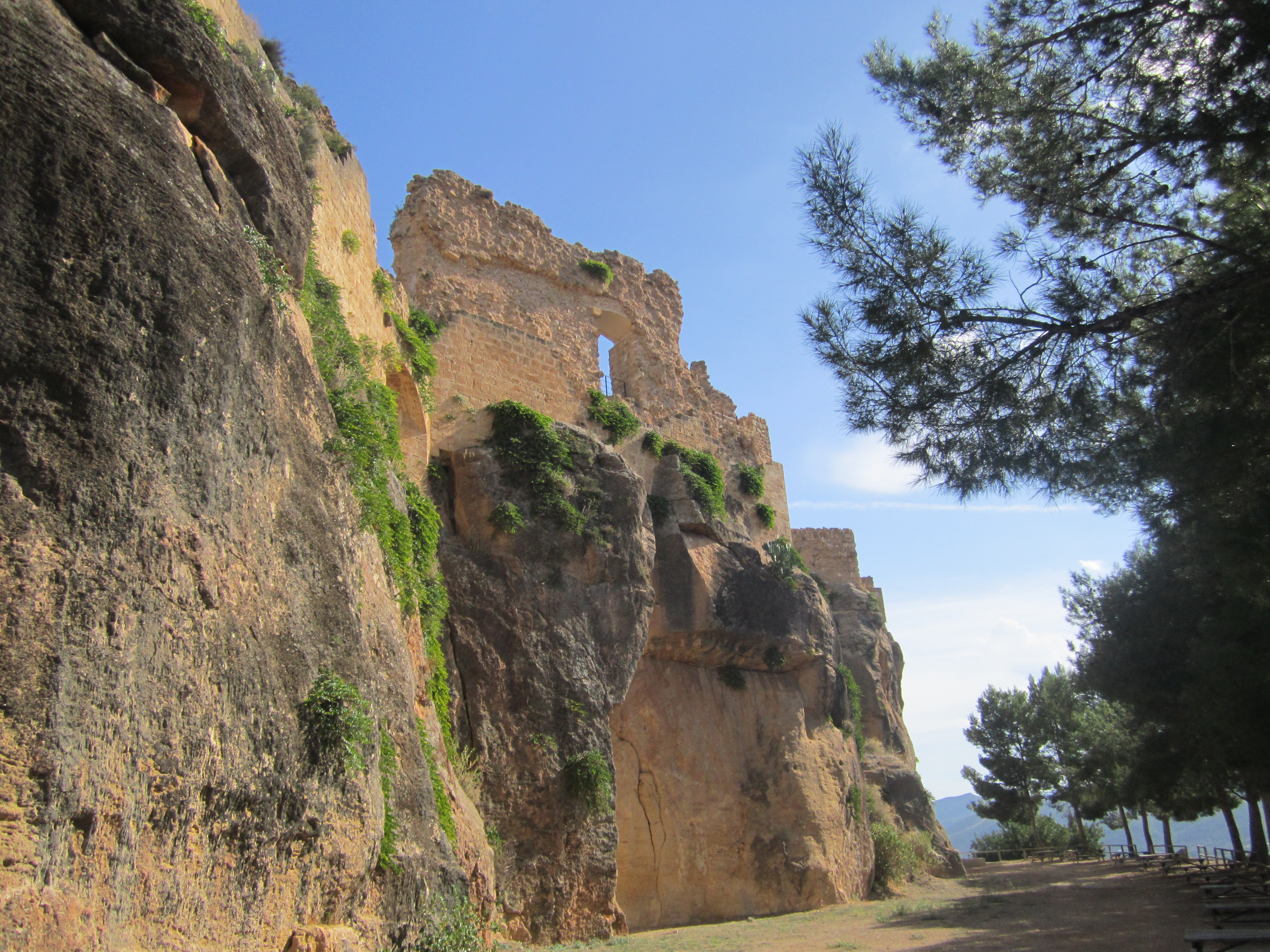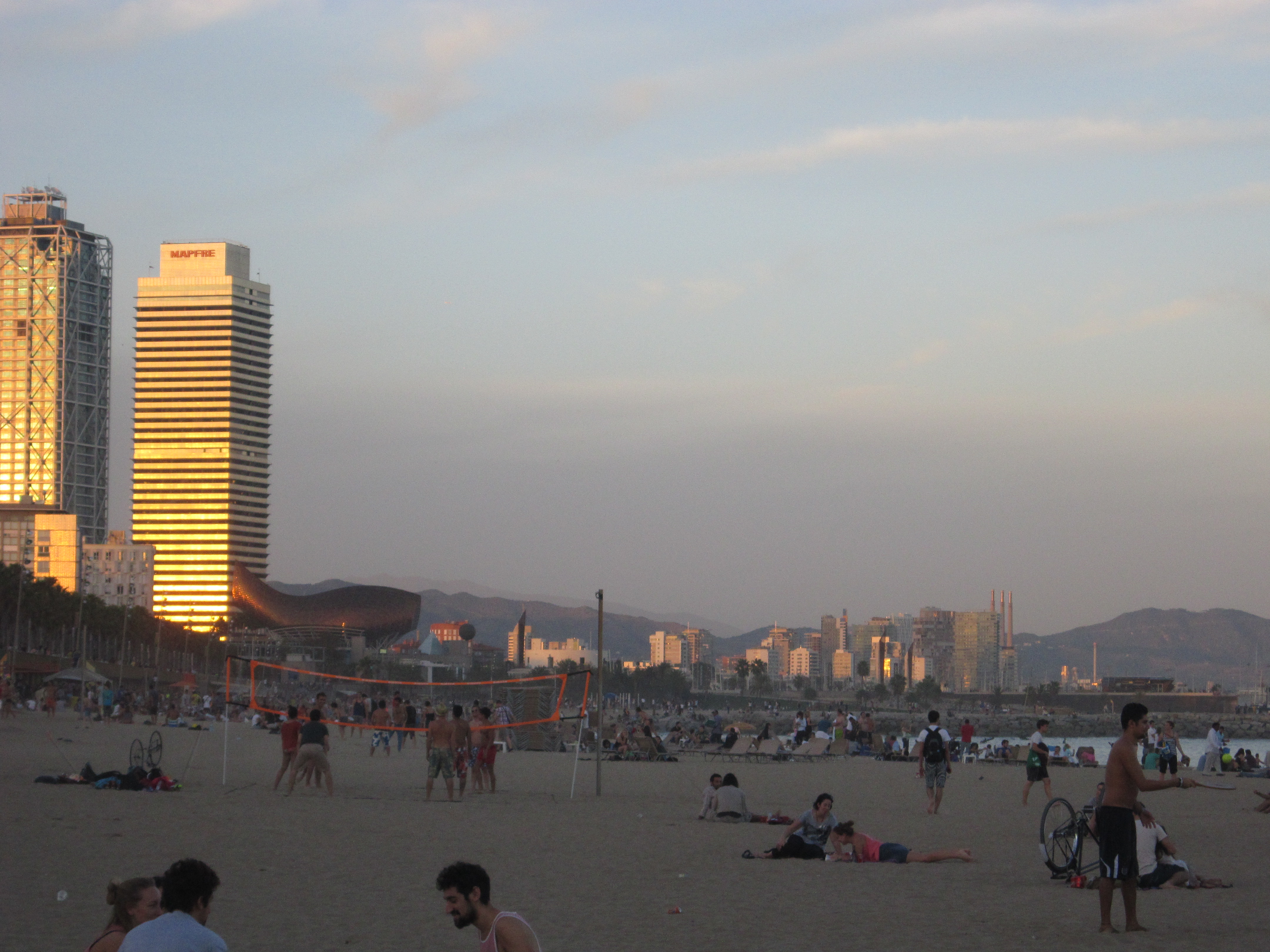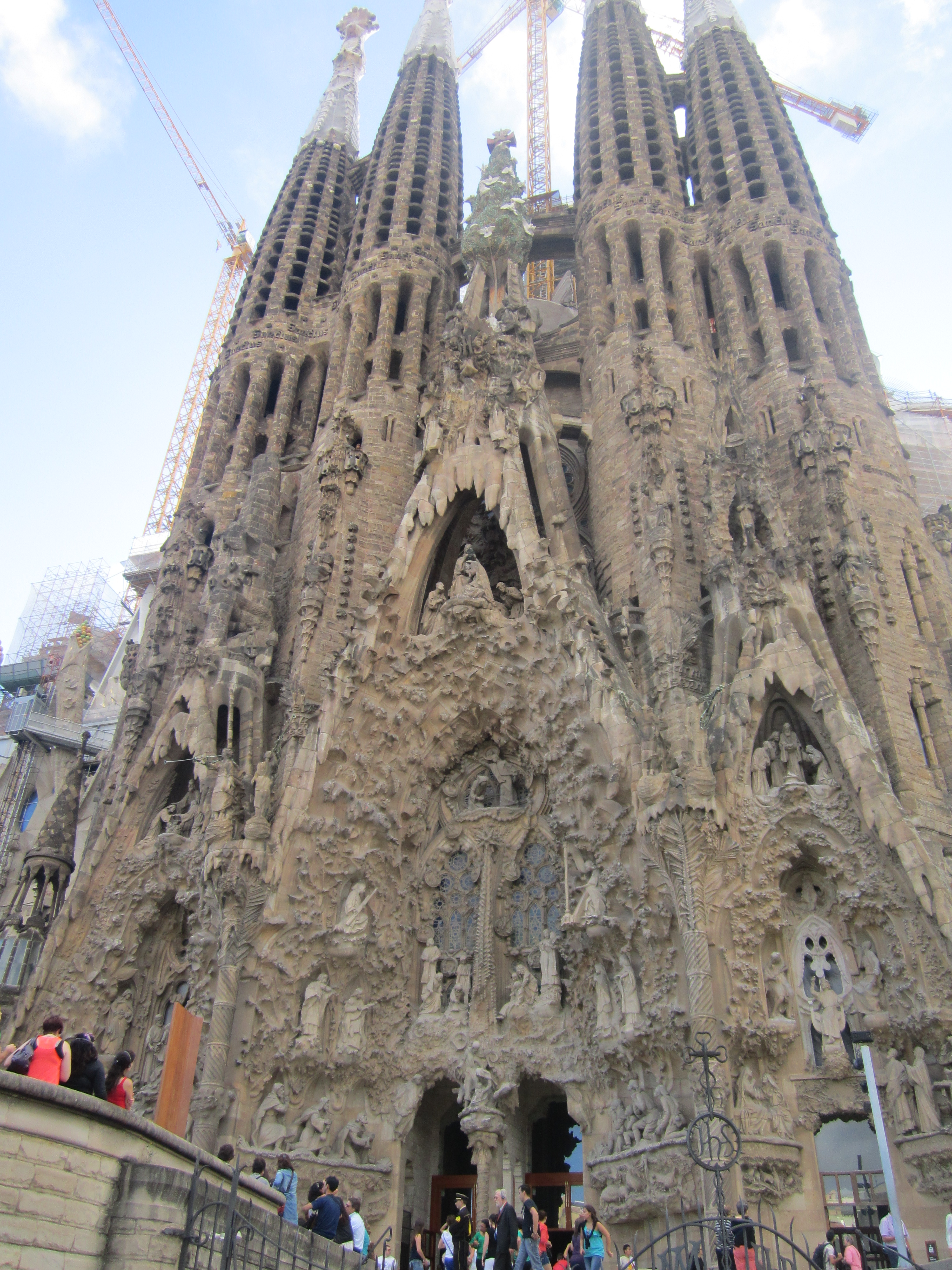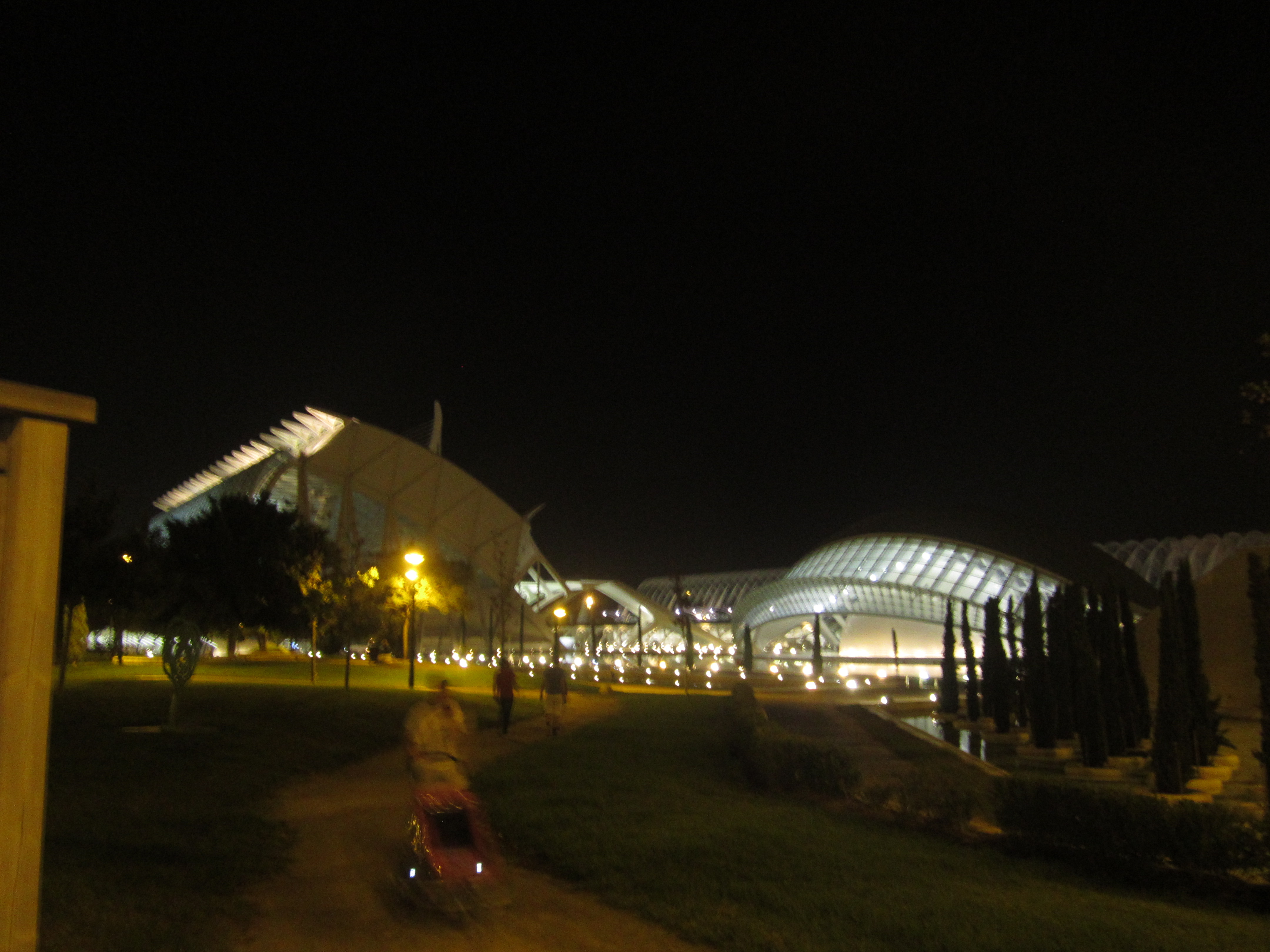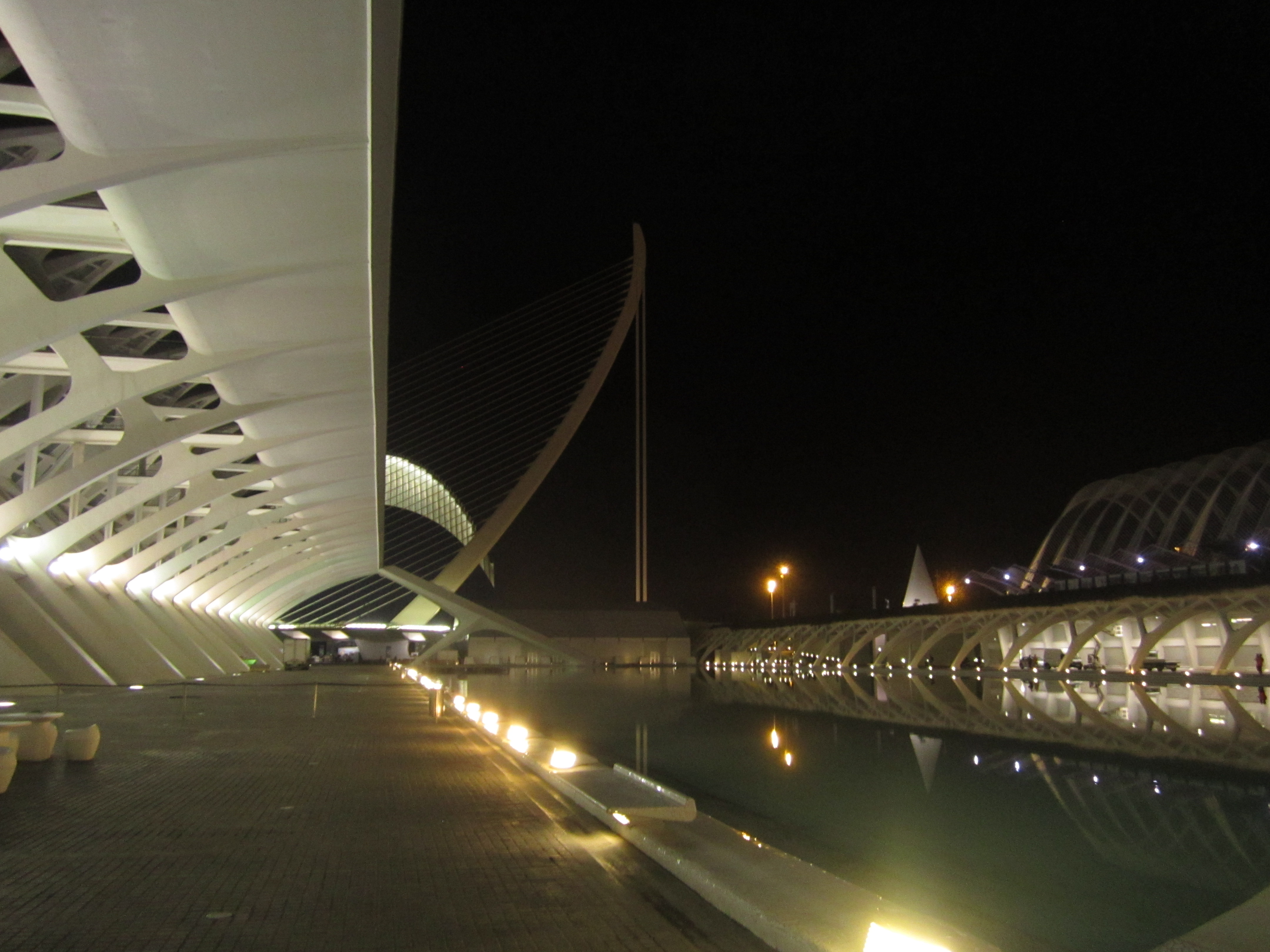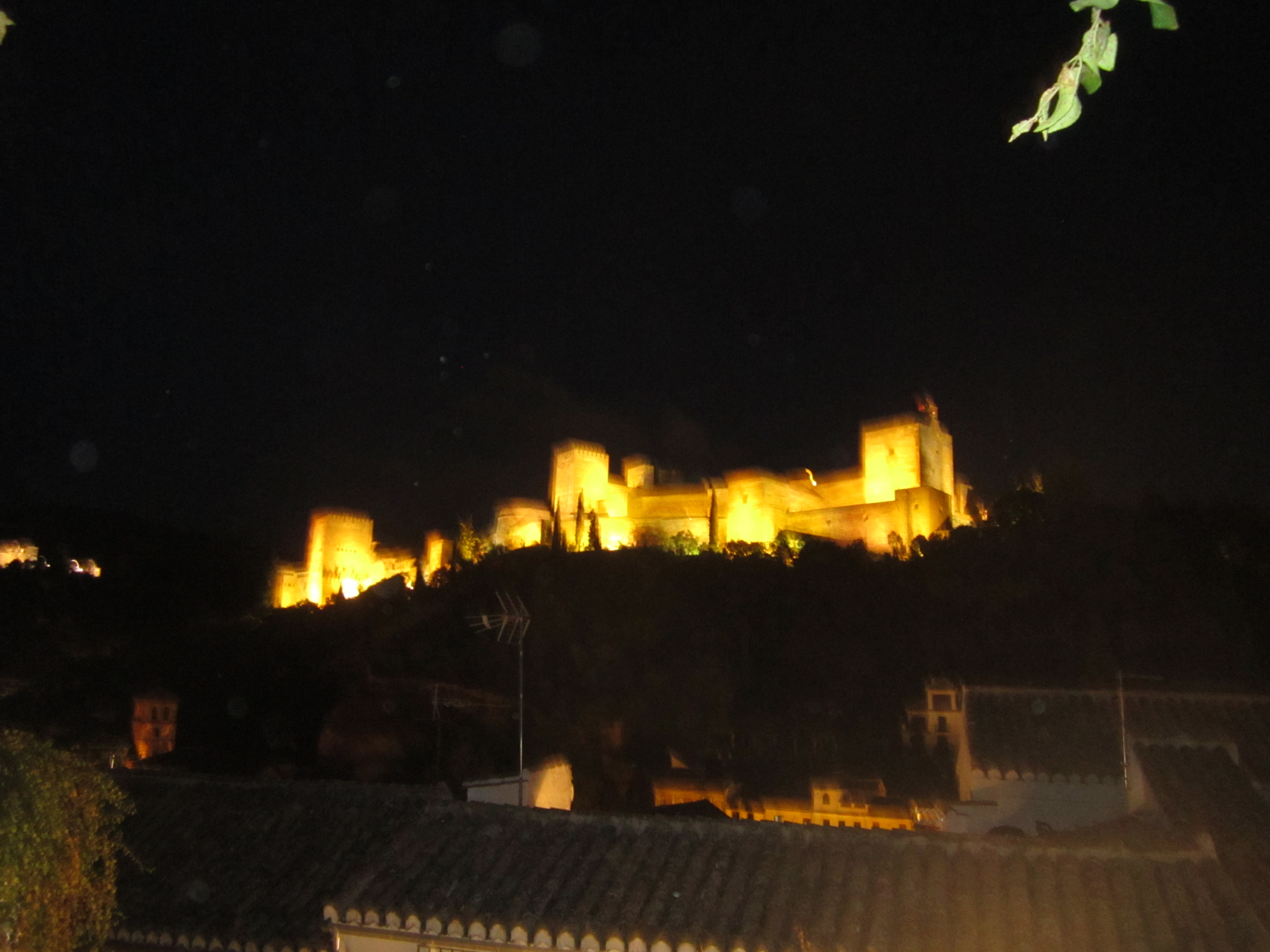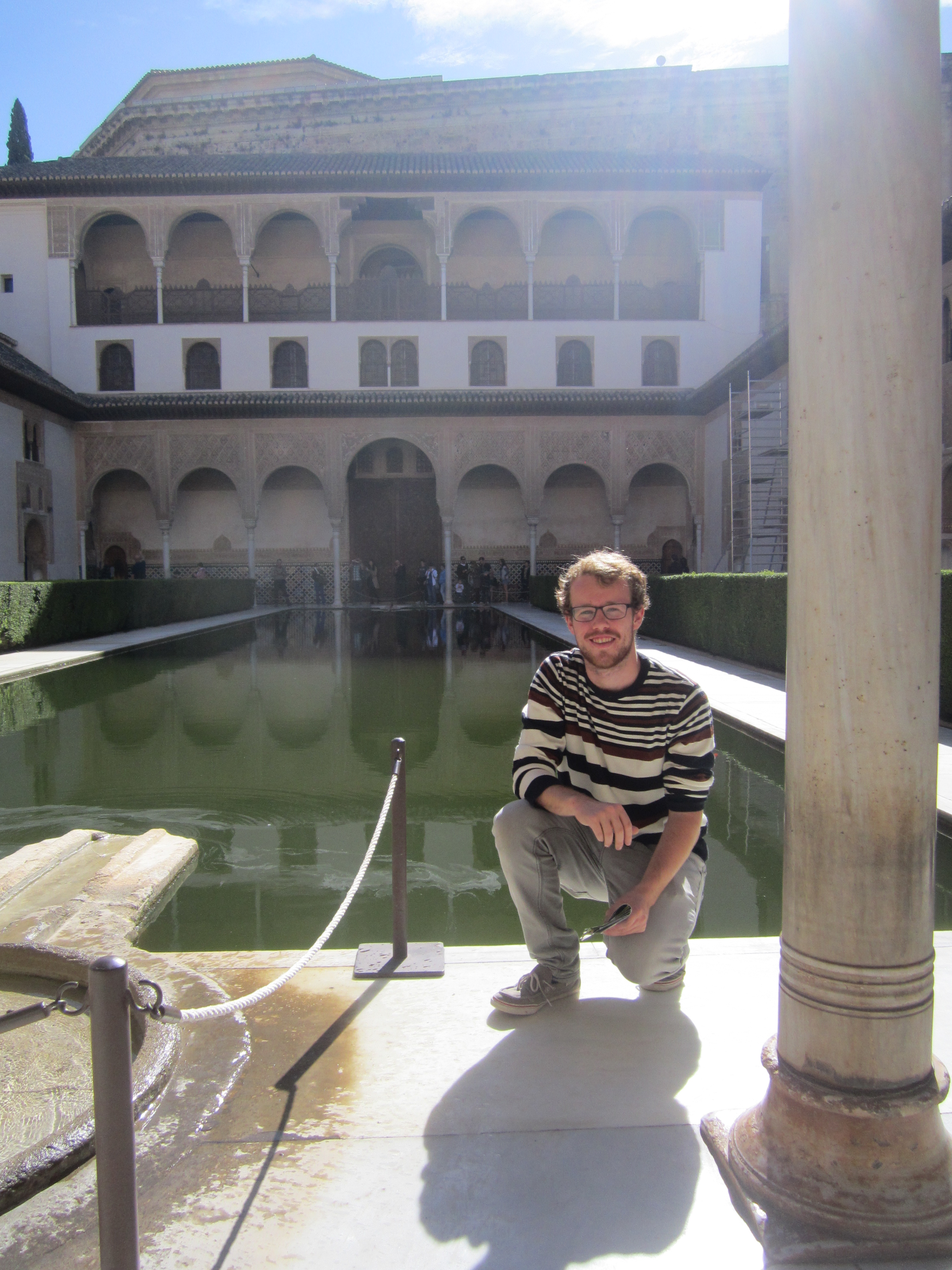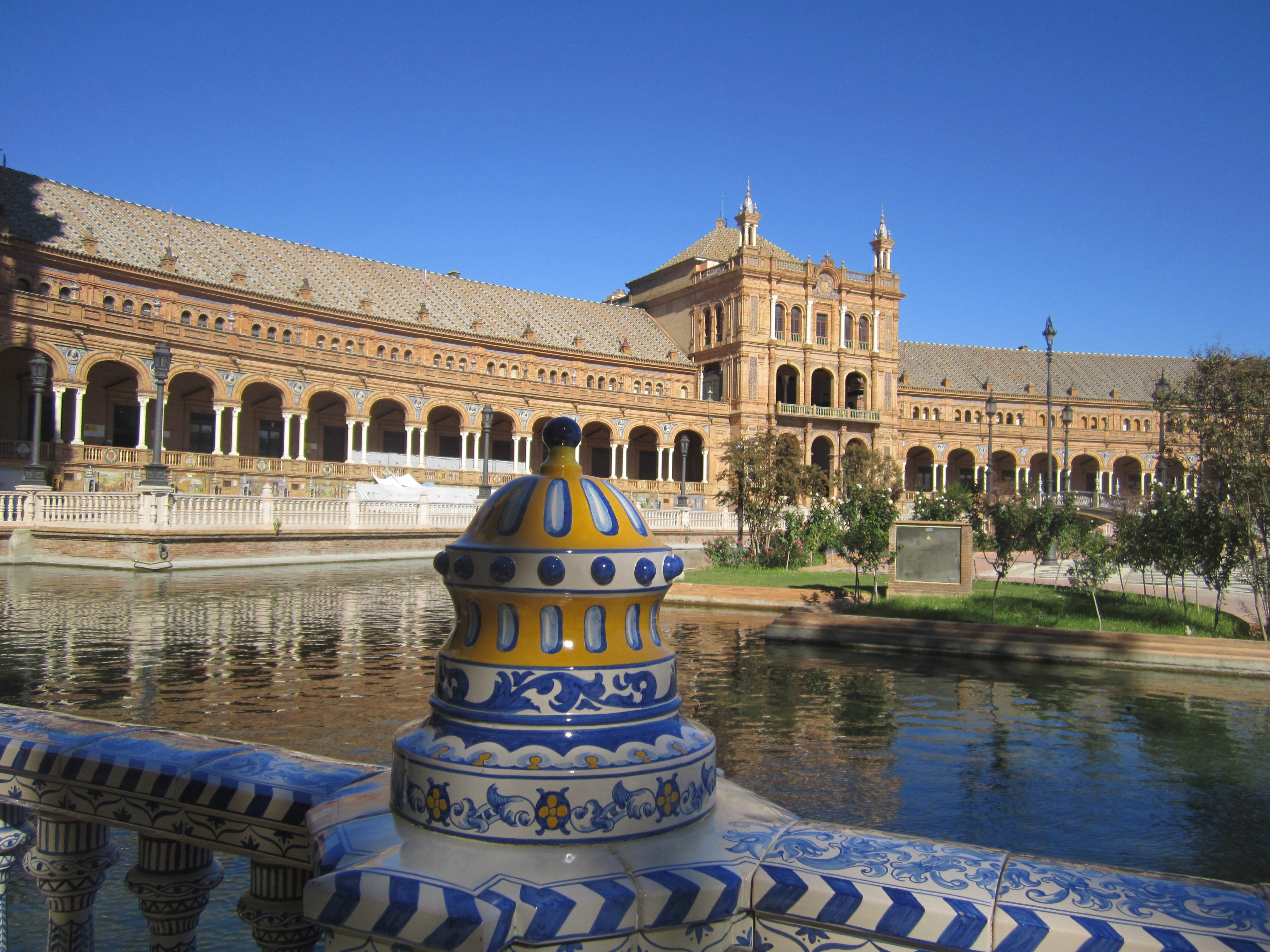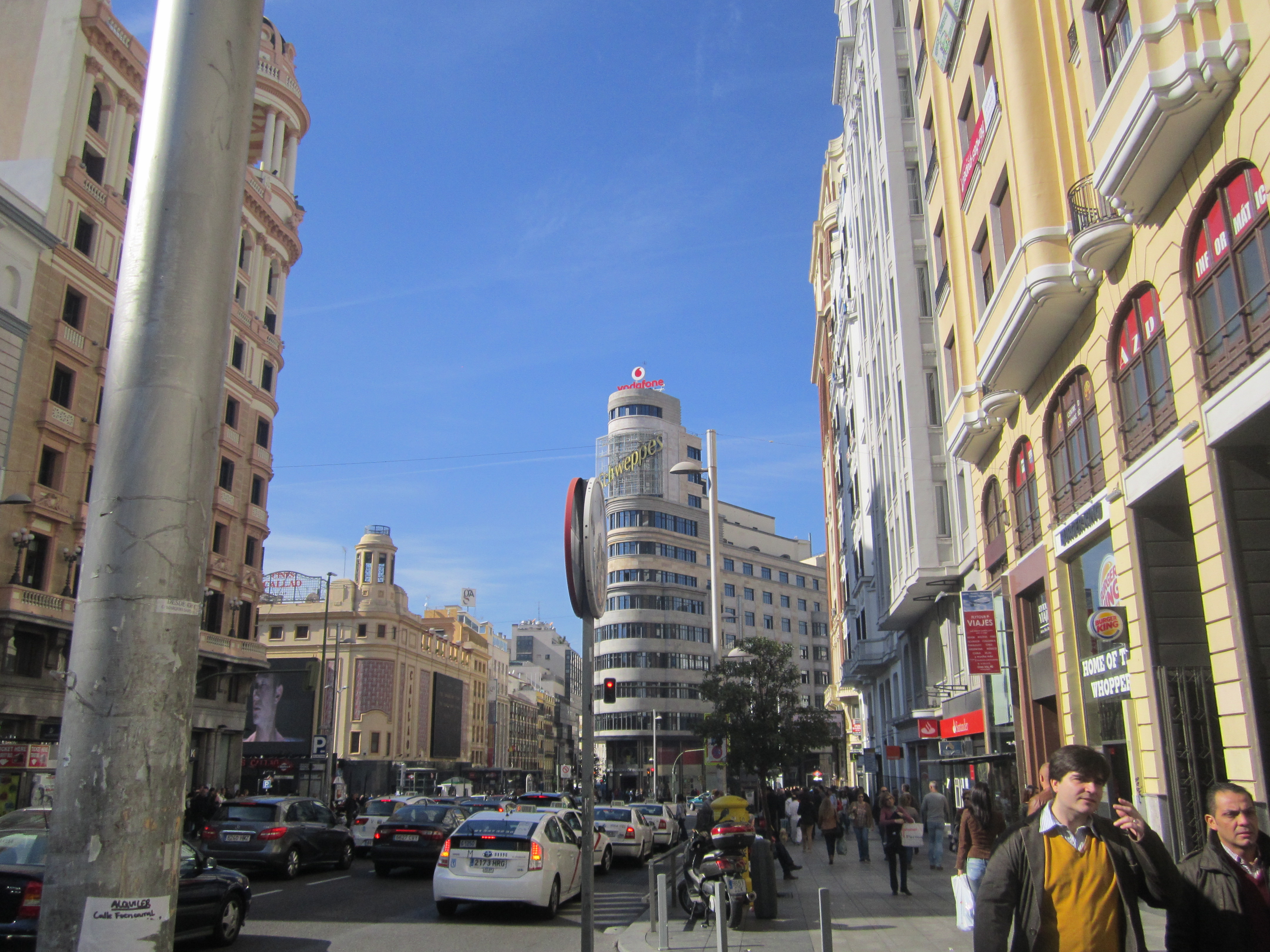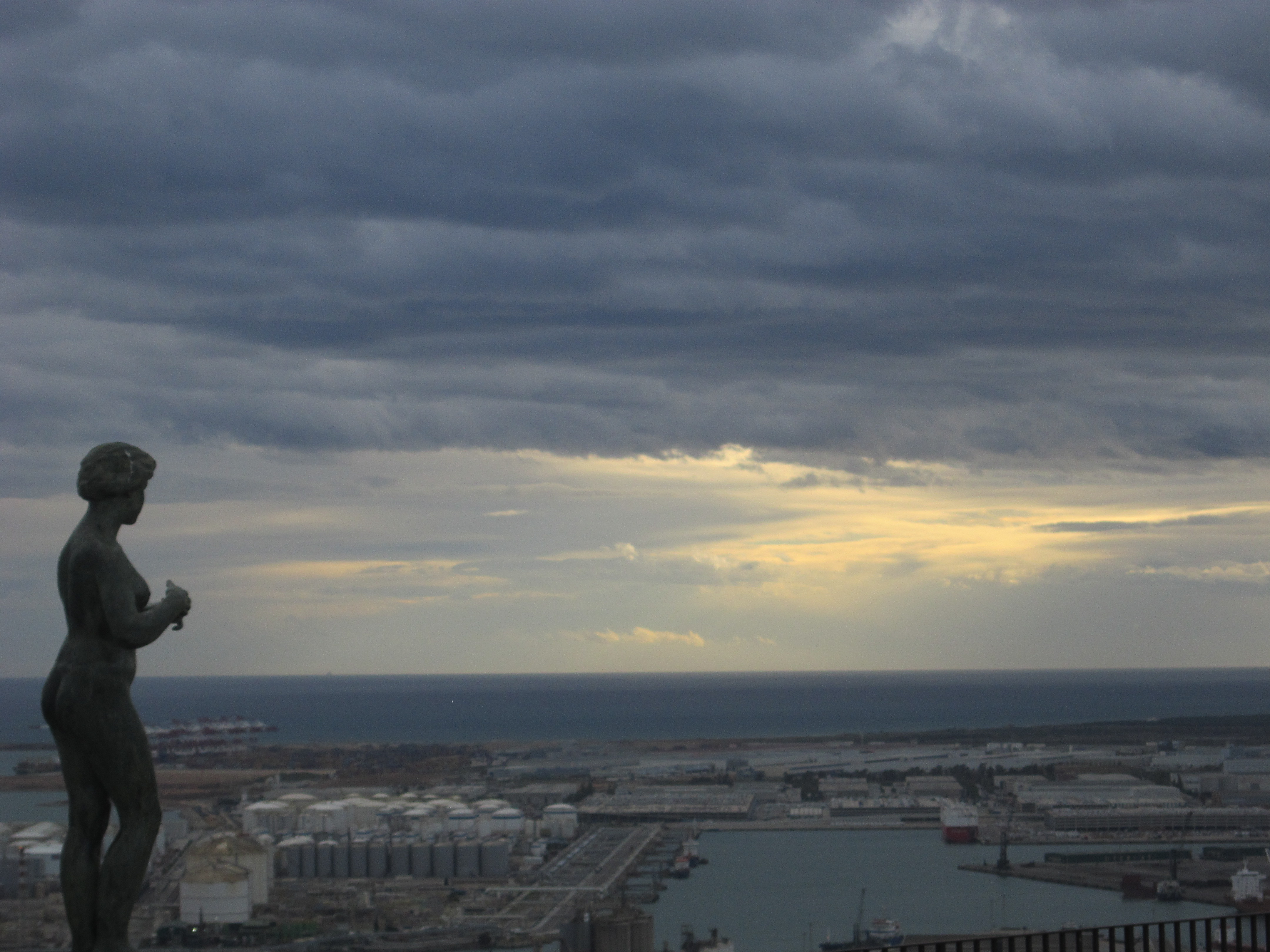Everyone goes to Rome one day; everyone goes expecting it to be just how everyone else saw it. Everyone comes back feeling a little different.
Okay, so that’s not exactly true– not everyone goes to Rome, and not everyone’s changed by it; they see some ruins, take some pictures and leave. But it’s hard when you’re there not to feel the impressions of everyone who went before you. Rome, after all, is old even by European standards. It’s the city every other city has dreamed of being; when Napoleon shaped Paris, he was thinking of Caesar, when London crafted their empire… Artists, poets, world leaders. Rome and Paris were the only two cities I knew I had to see this exchange. Every other European city would be “nice”, would be “great”, to see– only those two would affect my exchange (would make me regret if I didn’t). I went into Rome expecting to feel what I did for other cities I’ve already seen– excited by the history, fulfilled by the art, coming back to Paris thinking about the great weekend I had. I never expected how painful Rome would actually be.
It makes sense to start at the Coliseum. My friend and I walked the Appian Way, past the crumbling villas or the ones holding it together with duck-tape. It was the main highway–the road Nero strung up a couple hundred burning Christians– now mostly a quiet, leafy Mediterranean road. At the end of the road are a series of stone balconies rising up four levels topped by intricate colonnades broken only here-and-there by broken stone or punctures. If it wasn’t so instantly recognizable it could have been the beginning of a series of trendy new apartments; it might take you a second to realize it’s a stadium. But go inside, look at the broken steps where they sat, down to the passages where they kept the prisoners– listen close and you can hear the rush and the roar, the cheers and the screams.
It seems oddly fitting that Rome’s surviving legacy would be their place of death: their greatest achievement was their television, the violence a little realer than we’re used to. But all places in Ancient Rome start to feel like a graveyard after a while. It wasn’t something I realized right away; I just couldn’t shake the nagging feeling that I wasn’t as happy as I expected to be here– where was that historian’s joy? Instead it was increasingly miserable being there, and leaving the ruined area didn’t bring relief so much as it brought exhaustion. It took me half the weekend to discover why.
Rome was the first civilization I became enamored with. Grade Nine classics kept me on the edge of my seat. Maybe it was the glamour and the glory of the ancients, or maybe it’s that the lives of the Roman Emperors more closely resembled a soap opera than history. Either way, I was hooked. It brought me through a full university course on them and made me watch HBO’s Rome twice– never mind it was a second rate TV show and a pretty terrible prof. Rome was enough. So when I went to Rome I expected a culmination, for history to come alive like it did in Paris. Instead, if history comes alive in Paris, it dies in Rome. All that were left were some toothpick columns and some statues rendered faceless by the elements.
That’s not to say I was “disappointed” by Rome. In fact, having such unexpected emotions added to the beauty of the trip. There is something beautiful about the field of the forum, the kind of beauty my camera or your camera or a travel agency’s camera can’t capture. It’s a feeling. It’s a reminder: no matter how great we all think we are, this is where we’ll all end up. Is this what New York will look like? The skeleton of the Empire State crashing against the swallowing sea? Dramatic of course, but it’s impossible not to think of our own lives– of nuclear missiles, of the warming planet– when I’m confronted with something like this. Is this all any of us are good for?
And then there’s that eerie balance in this city– the symmetry and the form, as if the whole city were its own classical structure. For across the river was the watchful dome. If old Rome is death, new Rome is after-death (“new” as in “only five hundred years ago”, get it?). I’ve never seen such a ‘Catholic city’. Churches in Rome are really something else: not only is there one for every street, but each one seems filled with priceless art– here’s one with Bernini’s incredible “Ecstasy of St Theresa”, here’s another with three Caravaggios. Culture pools around the Church– each unique, each taking my breath away. On Sunday we went to watch the Pope’s address from his balcony, and hundreds of thousands of people turned up to fill the square. People screamed like they were at a rock concert, with flags of countries or posters of “we love you Papa” blowing in the wind. And this happens every Sunday? Even just the word “Papa” denotes the proximity: whereas French and English refer to Francis as the Pape or Pope, Papa seems much closer. When he said “hello my children”, and they screamed back “bonjourno papa!”, it gave me a better idea of why the church is still so central there.
So while Rome is labelled the ‘Eternal City’, I think it’s better to say that it’s the city most obsessed with eternity. Eternally searching. And where is it to be found? The Papacy would like to say at St Peter’s Basilica. It towers above everything– at night it could be a marble mountain rising above the rest. Inside, it couldn’t be called a church– a palace? a fortress? It’s cavernous, with pillars like high-rises and saints the size of giants (only looking towards heaven, never down at you). It made me think of the first church I saw this trip to Europe: the one-room chapel on the summit of Mt Croagh Patrick Ireland. Those two structures are so different I have a hard time labelling them under the same religion. St Peter’s is the center of an empire, an empire that’s lasted a millennia longer than the Romans. It also gave me a greater understanding of pre-modern Europe in general: when so much money was given– read: forced– from every corner of the continent, in order to build something much more for the glory of man than God, it becomes easy to see why Luther posted a couple reforms to that wood door. St Peter’s left me awed, but it also left me cold.
Now I don’t want to give the wrong impression of Italy or the Italian people; that would be unfair to my Italian friends. The Trastevere district, for example, gives a very different impression of Rome than what I write here: laundry hanging from balconies, amazing pizza restaurants, people singing in the streets. La Dolce Vita. I understand that many people see this side of Rome, joyfully, for what it is. But for me, Rome is the forum and the basilica; everything in between was just a mix of the two. And that question of what we’re all worth dogged me the entire time.
And then we go to the Vatican Museum. Formerly the main residence of the Popes, the opulence is astounding. It’s probably the best collection of Roman statues in the whole city (which says something). On the top floor, Raphael has painted the seven antechambers, giving visitors a dramatic history of the Church. Near the end is the original “School of Athens”– the one in which Socrates stands around his students and points at the sky. While it’s immediately recognizable on its own, it became relevant to me since a reproduction hangs over the Assemblee Nationale in Paris. What’s so fascinating is that the Assemblee depicts the painting on its own, so that Socrates pointing up at the sky symbolizes reason (a nice sentiment for the French Republic). Meanwhile, in its original form, Socrates pointing up at the sky is actually mirrored in the painting on the opposite wall, where the Pope points up at God. Therefore, in its original form Raphael equated philosophy with theology. That it’s not the same today is just a fascinating example of the way art can shift its meaning over time.
Of course nothing compared to the very next room. They do a good job– these Vatican type– building things up for you, because at the end of the hallway we walked in upon the Sistine Chapel. You know how certain pieces of art need to be truly seen to be appreciated? This one takes it to another level. I walked in and was immediately overwhelmed– everywhere I looked, incredible art. Along the walls, various artists like Botticelli have painted depictions of Jesus, while the ceiling, well, that one’s reserved for Michelangelo. It’s one thing to examine God reaching out for Adam; it’s another to see them looking down on you. In painting the fall of man from the Garden of Eden, Michelangelo isn’t concerned with the Bible– he’s concerned with human nature. And it’s all there, on the walls, as people fight for a place beside Jesus– battling it out as even Mary’s in pain. It’s a masterpiece, and it’s barely changed since the Renaissance. Suddenly humans didn’t seem so screwed anymore; if Michelangelo survived after all this time… well, who knows?
Rome wasn’t the most fun of cities: perhaps there are nightclubs somewhere in that city, but we’d get home so exhausted from travelling we didn’t bother. And when my friend assumed I would love to spend another four or five days there to get to see everything else, I quite honestly replied “no, I couldn’t handle another day here. After three days I was dried out, ready for the rest of something (now at least a little) familiar, in Paris. But no city has impacted me more in such a compact period: three days and I went through a cycle of despair and hope all at once. Rome does that to people– moving through it you see where others were just as inspired, so much so it’s almost a cliché to say so now. And it’s the first city I’ve found myself looking at the pictures I took in class, only three days later, drooling over them, like they’d happened to a different person. Rome the eternal; it’ll stick with me.



